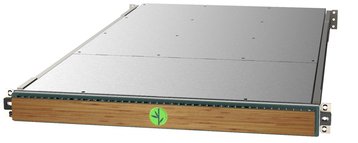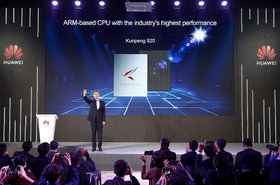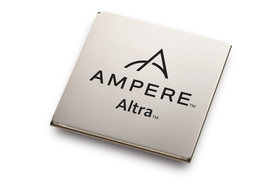Bamboo Systems has launched a new server featuring its own architecture and NXP Arm chips.
The company, previously known as Kaleao, announced the general availability of the B1000N Series of servers, based on its Parallel Arm Node Designed Architecture. PANDA is designed to be used in parallel, with each 1U chassis fitting up to two blades, each with four servers.
The servers include an NXP Layerscape LX2160A with 16 Cortex-A72 CPU cores running at up to 2.2GHz. A fully-specced B1008N chassis features 128 cores, 16 DDR4 memory channels to 512GB DRAM, and 64TB of NVMe storage.
Focused on microservices workloads, the company claims the servers use up to 75 percent less power than comparable Intel systems, at half the cost of an equivalent Dell server.
Unleash the panda
"Everybody else has just taken an Arm processor and dropped it into an Intel socket," CEO Tony Craythorne told DCD.
"HPE have an Arm server, Lenovo have an Arm server, Supermicro have an Arm server - but all they've done is dropped it into an x86 architecture. And so you get some of the benefits of Arm, but not all of them. And what we've done is completely different."
Craythorne pointed out that some traditional servers still include unnecessary features like remote link ports, serial ports, and other legacy architectures. "All of this is drawing processing and power," Craythorne said. "We've removed what isn't required."
The company also shifted away from the concept of using the main CPU for controlling networking, storage, and everything else. "What we've done is broken out the application processing tasks, and then separated out the I/O networking and storage tasks," he said.
"The throughput that we get by disaggregating and breaking out the application and I/O is quite staggering. We can get many more processors and servers in a smaller footprint because we don't have a huge chip doing everything. We've got multiple smaller chips and smaller nodes that are able to run the applications far more efficiently."
Arm, with its significant power efficiency gains over x86, has long been touted as a potential data center chip replacement. But efforts to dominate the server space have traditionally failed - including the untimely demise of chipmaker Calxeda, and the varying levels of failure of Broadcom's Vulkan, Qualcomm's Centriq, and AMD's Seattle.
Craythorne pointed to some positive signs in the industry, including Amazon Web Service's Graviton chips, and Apple's embrace of Arm for its consumer computers this week. Also this week, the new world's most powerful supercomputer debuted, powered by Arm.
"And given the fact that there is far more software available now to run [on Arm], we're starting to see the excitement around it," Craythorne said. "Do I think it is gonna overtake Intel overnight? Absolutely not. This is gonna be a long hard slog to to to even take a few percentage points out of Intel, but it's such a huge market."
The company did not develop its own Arm chips, currently opting to use commercial NXP chips. Bamboo is exploring other processors, including Ampere: "We're looking at it for next generation," he said.
Bamboo also has ambitions beyond Arm, Craythorne said. "Yes, we launch in an Arm processor, but it's the PANDA architecture that is key to this. Today we're launching a server with storage, we can actually turn that on its head. Down the line potentially produce storage with compute - a highly fast storage box with with with a lot of compute in. The other thing is composable infrastructure - we're already working on on some enhancements to that, that we will be launching probably next year.
He continued: "We're talking today about Arm, we use off the shelf boards, and today that's got an NXP Layerscape chip in it. But it's nothing stopping other technologies being open to that as well... we could potentially put GPUs in there."
As for Edge markets, where low-power Arm chips have been particularly popular, Craythorne admitted that it was an area of interest. "I shouldn't really say this but we have one - it's about eight inches by eight inches. That's a prototype that the team actually built before I joined, they lovingly call it server in a box."
But, as a small start-up with a few million in funding trying to crack a market dominated by billion-dollar giants, fighting over a traditionally conservative consumer base, Craythorne is cautious to not attempt too many products at once.
"Focus equals results," he said. "If we come up with a range of appliances, then it'll probably defocus and confuse everybody. It's the reason why we're coming out with a fairly standard 1U form factor today. It's what we think is a truly unique the world's first true Arm server - we haven't just taken a chip and plugged it into an x86 server."




